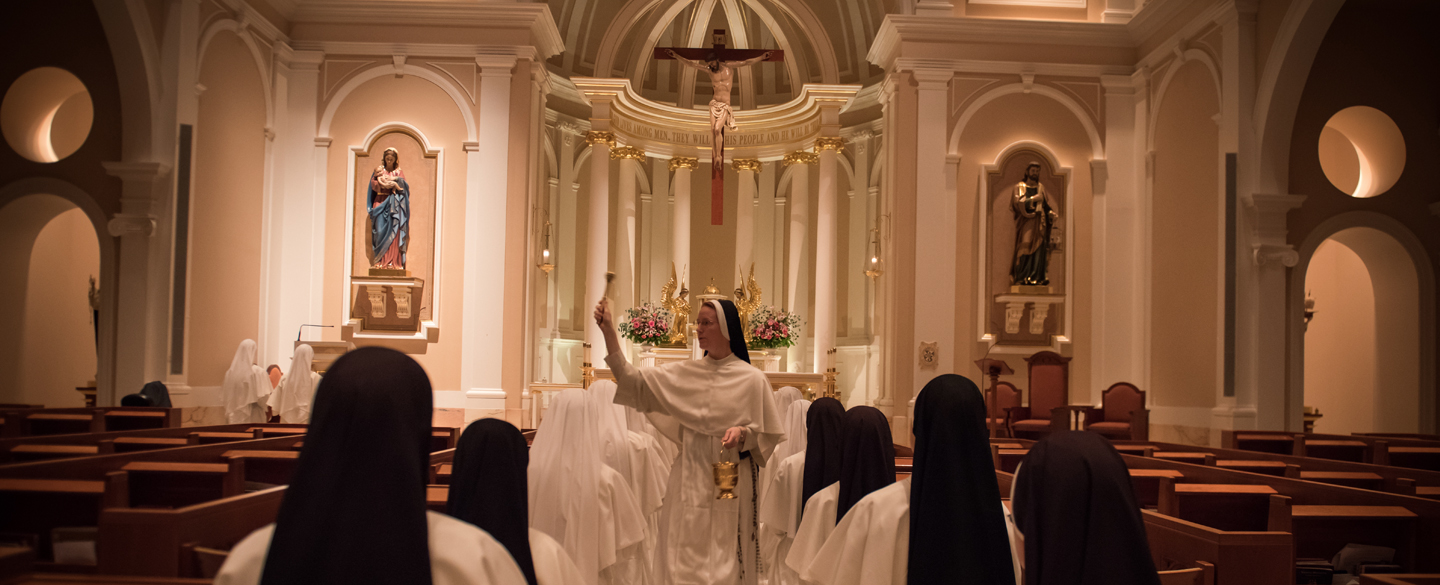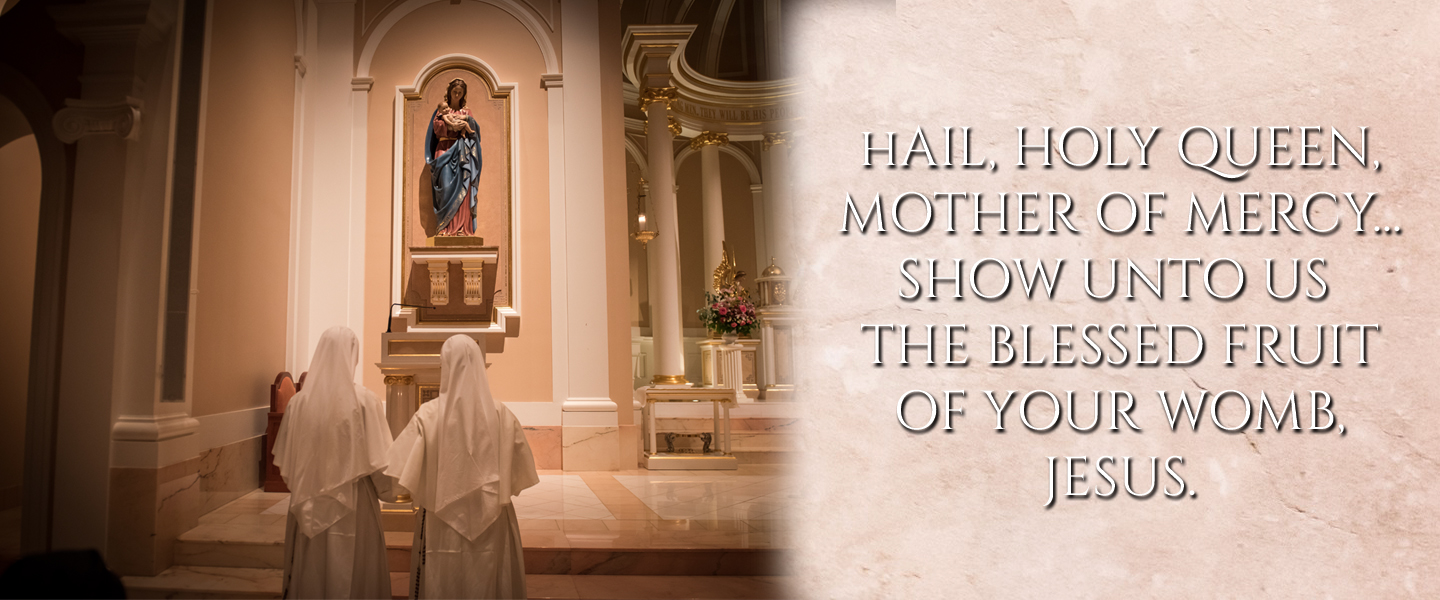
Turn, then, most gracious advocate, thine eyes of mercy towards us. (Salve Regina)
Since the time of St. Bernard, the Salve Regina (Hail Holy Queen) has been sung by religious in monasteries throughout the world in honor of the Blessed Mother. In 1221, very soon after the death of St. Dominic, Bl. Jordan of Saxony instituted a procession after Compline, which was to accompany the singing of the Salve. This was done in response to a crisis in the community. In Bologna at this time, several Dominican houses were having trouble with assaults from the devil, and a certain brother by the name of Bernard was suffering acutely. His difficulty caused disturbance to the whole community. It was decided to invoke the aid of our Heavenly Mother. The Salve was thereafter sung in procession, seeking the Blessed Mother’s special protection. Immediately, peace was restored to the monastery. The practice of the Salve procession spread rapidly to other Dominican houses, as well as to other religious orders in the Church.
This beautiful Dominican tradition continues today in each of our convents. After Compline each night, the lights are dimmed in the chapel. The Salve, sung in the traditional Dominican Latin chant, is intoned by two candle-bearing novices, who then lead the community in procession to the statue of Our Lady.
During the procession as the words “eia ergo advocata nostra” (‘turn then, our advocate’) are sung, the community kneels. The hebdomadarian (a designated leader of prayer) then walks down the aisle and blesses the brethren or sisters with holy water. This tradition is steeped in Dominican history and originated in a story of the Blessed Virgin’s visitation to St. Dominic. One night St. Dominic came upon a heavenly trio as he made his way through the dormitory of the brethren. Three radiant women came toward him as the one in the center made the sign of the cross with an asperges brush dipped in holy water, blessing the cells of the sleeping friars. The astonished St. Dominic knelt at their feet, looked toward the most beautiful woman in the middle and asked her who she was. The Blessed Mother replied, “I am she whom you invoke every evening, and when you say, ‘eia ergo advocata nostra,’ I prostrate before my Son for the preservation of this Order.” When St. Dominic inquired about the other holy women with her, she identified them as St. Cecilia and St. Catherine of Alexandria.
The Salve is also sung at the bedside of a dying sister. After a priest anoints the sister who is in her last hours, the community recites the prayers for the dying. Many sisters, after a long and fruitful religious life, have left this world with the Salve ringing in their ears. This practice stems again from our Dominican roots. In 1260, in Sandomir, Poland, Blessed Sadoc and forty-eight friars were martyred by the Tartars, a barbarian tribe. The Blessed Mother’s watchfulness over the community was evident as they had been miraculously warned the day before their death. In preparation, each friar went to Confession and Mass, and then performed, as perfectly as possible, his ordinary duties. It was not until evening that the Tartars invaded the monastery. The Dominicans were slain as they sang the Salve. This incident that prompted the tradition of singing the Salve at the deathbed of the brethren.


 Back
Back